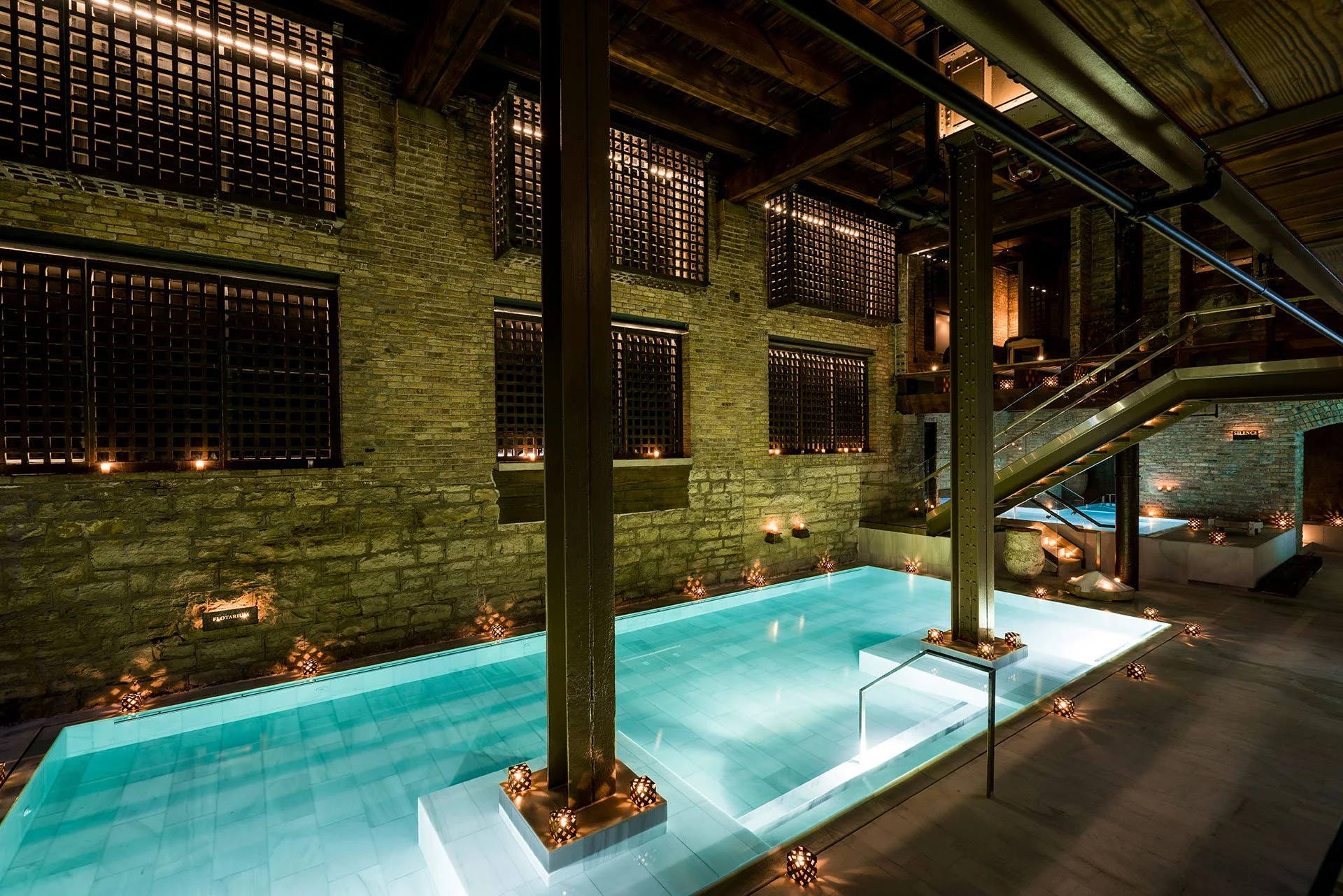Illinois’s Haunted Mineral Springs
Illinois, often associated with bustling Chicago and vast cornfields, might surprise you with a hidden gem – a natural hot spring. While the state's geothermal landscape isn't as dramatic as others, The Original Springs Hotel in Okawville stands as a testament to a bygone era and offers a unique opportunity to soak in naturally warm waters.
The original building opened in 1867, but was destroyed in a tragic fire in 1891. The town wouldn’t give up their crown jewel, though — the hotel reopened in a new building in 1893 and has remained there ever since. Tragically, three of the hotel’s owners have died by suicide.
Get the Civil War Room if you want to see if you can find the ghosts. One guest felt someone pressing on her legs at night in Room 350 and was so spooked that she left immediately, telling staff the place was too spooky for her liking. Other guests come to stay at the hotel just to see the ghosts, usually booking a room on the fraught third floor. Room 350, on the third floor, is the place where owner Tom Rogers was found dead. The second floor is strictly avoided by staff, who say they often hear noises coming from vacant rooms.
Get the second floor room overlooking the pool if you want to watch your kids while relaxing.
The Original Springs Hotel was established in 1867. Water samples were then sent to St. Louis for further testing. Analysis showed very strong medicinal qualities, comparable in quality to the famous Carlsbad Baths in Germany and to the renowned waters of Hot Springs, Arkansas, though not hot when coming out of the ground.
A Spa Admission provides a Mineral Bath, Use of the dry heat room, Use of the heated indoor swimming pool, Locker and Shower Facilities.
The spa offers:
Full-service restaurant
Mineral Spring Spa
Indoor Heated Pool
Event Spaces
Meeting facilities
Bar
Catering
Complimentary Wi-Fi
Some Pet-friendly Rooms
AIRE Chicago
Located in a restored factory from 1902 in River West, close to the West Loop, AIRE Chicago gives you the traditional Roman, Greek and Ottoman ancient experience of baths. The only thing you need is your bathing suit or bikini, since its use is mandatory in the facilities, although they have some available in case you need it. They will provide you with towels, non-slip shoes, hygiene products, hair dryers and hair straighteners. The bathing area is a large co-ed space, with different zones and massage areas.
Enjoy a relaxing sensation as you walk through the thermal baths, including the Caldarium (Hot Bath), the Frigidarium (Cold Bath), the Tepidarium (Warm Bath), the Balneum (Bath of a Thousand Jets), the Vaporiums (Two Steam Rooms with Aromatherapy), the Palestra. Try out their signature red wine soak.
Stay nearby at one of the many penthouse apartments overlooking the City and lake. During the day enjoy a cruise or crime tour to round out your stay.
Chicago Bath House
Nearby you can try the Chicago Bath House, a traditional style bathhouse located at 1914 W. Division Street in the Wicker Park neighborhood of Chicago, Illinois, which has operated since 1906. The most popular feature at Chicago Bath House is the traditional Banya, Schvitz, or hot room. Each of these rooms have a brick or granite ovens in which boulders, approximately the size of watermelons, are heated to extreme temperatures by gas jets.
Kneipp Springs
Make it stand out
Whatever it is, the way you tell your story online can make all the difference.
From 1901 to 1976, the Sisters of the Precious Blood owned and operated Kneipp Springs, a health resort and spa with natural mineral springs outside of Rome City, Indiana, about 40 miles northwest of Fort Wayne. Today you can visit for a tour and collect drinking water from the springs.
Kneipp Springs, called Kneipp Sanatorium, Kneipp Sanitarium, and Kneipp Springs Health Spa throughout its history, was a destination for those seeking the “Kneipp Cure.” From the late 1800s to early 1900s, sanitariums were the “it” thing in medicine to treat infectious diseases, mostly tuberculosis.
Named after Dr. Sebastian Kneipp, a priest and philosopher living in Bavaria in the late 1880s, the Kneipp Cure sought to prevent or cure illnesses by bringing together mind, body and spirituality through hydrotherapy (water treatments such as hot and cold compresses, bathing in natural springs, etc.) and emphasis on natural foods, exercise and the use of herbal teas.
Patients at Kneipp Springs who were there for medical treatment usually stayed on the grounds in the large spa building or in several available outbuildings. Some patients were there for a month; others were there for years, even decades. Many of these patients were suffering from long-term physical or mental illnesses. Priests and bishops were frequent patients; they took the treatments to have a respite from the rigors of their daily duties.
Vishnu Springs Ghost Town
Explore the remnants of past spa towns like Vishnu Springs (formerly known as Tennesee Springs) near Fairfield, Illinois. Vishnu Springs is a ruined resort town located in a river valley in west-central McDonough County, Illinois.
According to legend, the natural spring water was said to have had medicinal properties capable of solving a variety of physical and psychological ailments. Some time in the 1880s, the land was named after the Hindu god Vishnu because of the supposed healing power of the water.
The resort was also a haven for bootleggers and gangsters, including Al Capone, to take refuge.
The only remaining structure is the Capitol Hotel. The property is currently owned by Western Illinois University Foundation and is known as the Ira & Reatha T. Post Wildlife Sanctuary.





